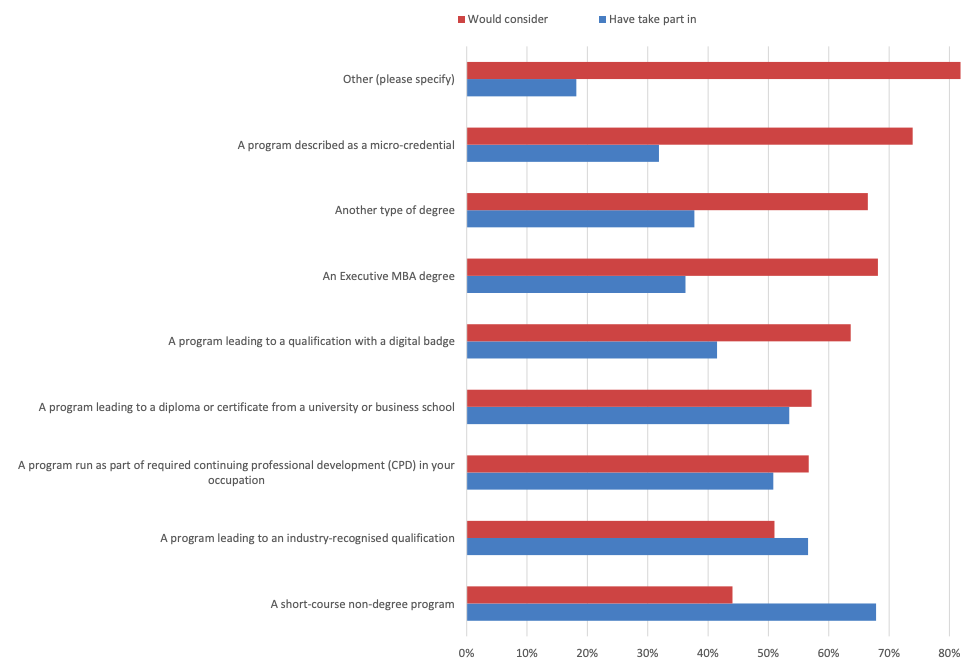
Executive Education Program vs Part-time or Full-time MBA
If you’re unsure about the difference between a part-time or full-time MBA and executive education programs, you’re not alone. Executive education programs are intrinsically different from part-time or full-time MBAs with reference to the participants, years of experience, purpose, takeaways, and even content.
Read: Executive Education Trends 2023
Executive Education Program Vs MBA
Here are a few types of learning options undertaken and considered by individuals.

*Source: CarringtonCrisp Executive Education Futures 2018 Study
Here are a few points based on five distinct differences to help you understand the difference between MBA and Executive Education.
Who is executive education for?
This is the most imperative distinction between the two. While an MBA doesn’t typically have a cap or criteria for when you can do it, executive education programs are specifically structured and curated for senior professionals with a few years of experience. How many years will depend on the particular program? It could be anywhere from 5 years to 15 years and upward.
The curriculum of executive education
Both, MBAs as well as executive education programs have vastly different curriculums. MBAs are more theory-based and are designed for those without much work experience. On the other hand, executive education programs are created for senior professionals who have a few years of working experience and are looking for an advanced learning module experience for reasons that can range from upskilling to do better at a new role or job, to learning new skills before switching industries. The program material is focused on current scenarios and is more relevant for the present and future.
Read: Executive MBA Salary and Scope in India
Structure of executive education programs
Part-time or full-time MBAs are well, either part-time or full-time, and are typically pursued after primary and possibly secondary college years. With no such standard format, executive education programs can be full-time, part-time, certification, online, short-term programs, or even multi-modular – a combination of all those formats. The Global Master of Business Administration (Global MBA) from the Richard DeVos Graduate School of Management is a fully accredited dynamic and life-changing educational program that offers three different formats to choose from. This makes it more accessible to and better curated for professionals who might not be able to commit to a full-time program due to prior work and personal commitments.
Institutions
MBAs are available at a number of private as well as government colleges and universities. While executive education programs are typically offered by top-ranked universities and business schools that have noted faculty members. Many of whom are Nobel Laureates and industry leaders.
Degree and certification
MBAs are usually degree courses acquired during the traditional learning years. While executive education programs are usually taken up after a few years of work experience and are typically non-degree- and non-credit-granting certification programs that come with a host of advantages that benefit senior business professionals specifically.
Read: Executive MBA Salary and Scope in the US
With these points you can decide whether an executive education program might suit you better than a part-time or full-time MBA or vice versa.
FAQs
Q. What is the primary difference between executive education programs and an MBA?
A. While an MBA doesn’t typically have specific age criteria for when you can do it, executive education programs are specifically structured and curated for senior professionals.
Q. How does the structure of an executive education program suit the needs of senior professionals?
A. Depending on the school and type of program, executive education programs can be full-time, part-time, certification, online, short-term programs, or even multi-modular – a combination of all those formats. This makes it convenient for senior professionals with prior work commitments to choose a fitting program structure.


















